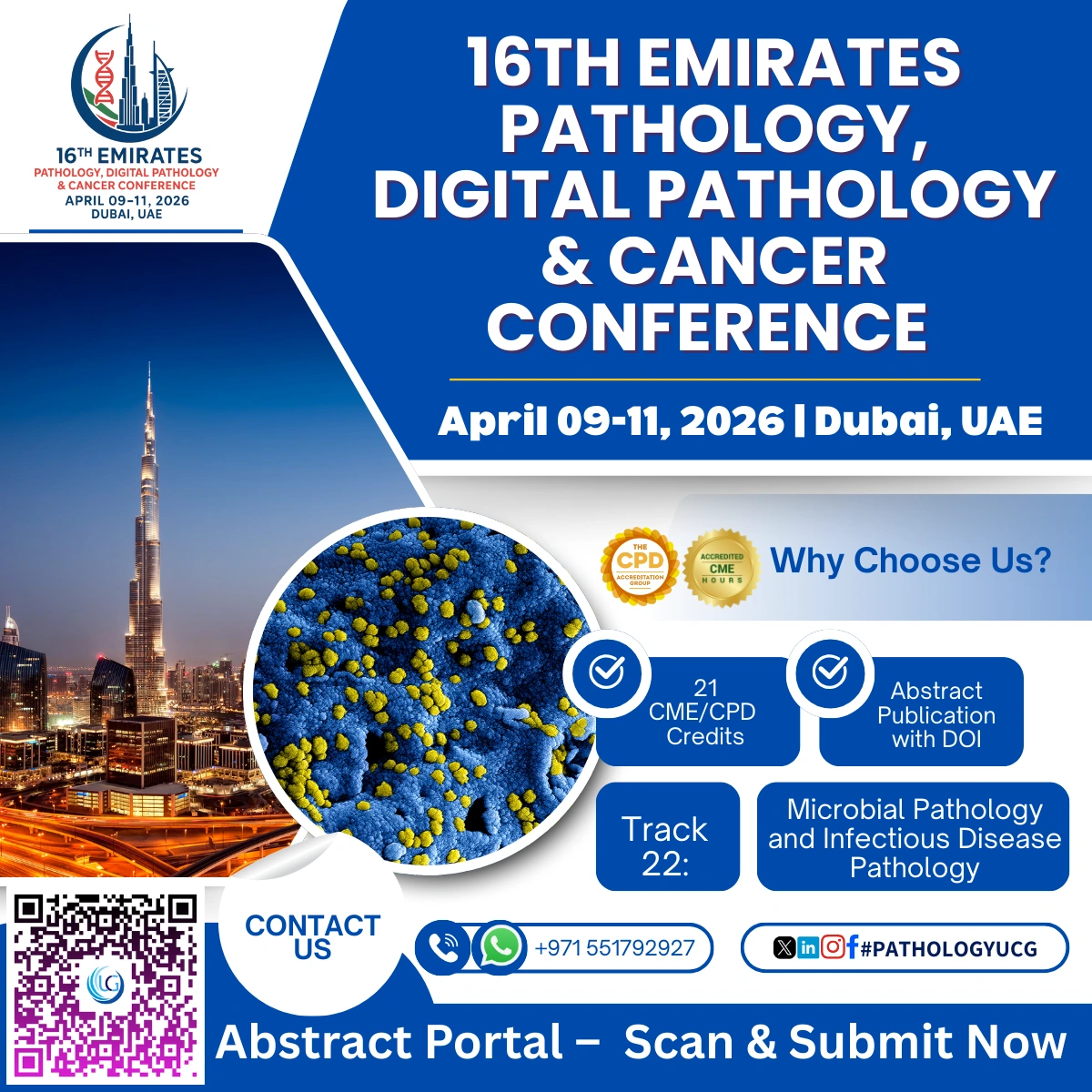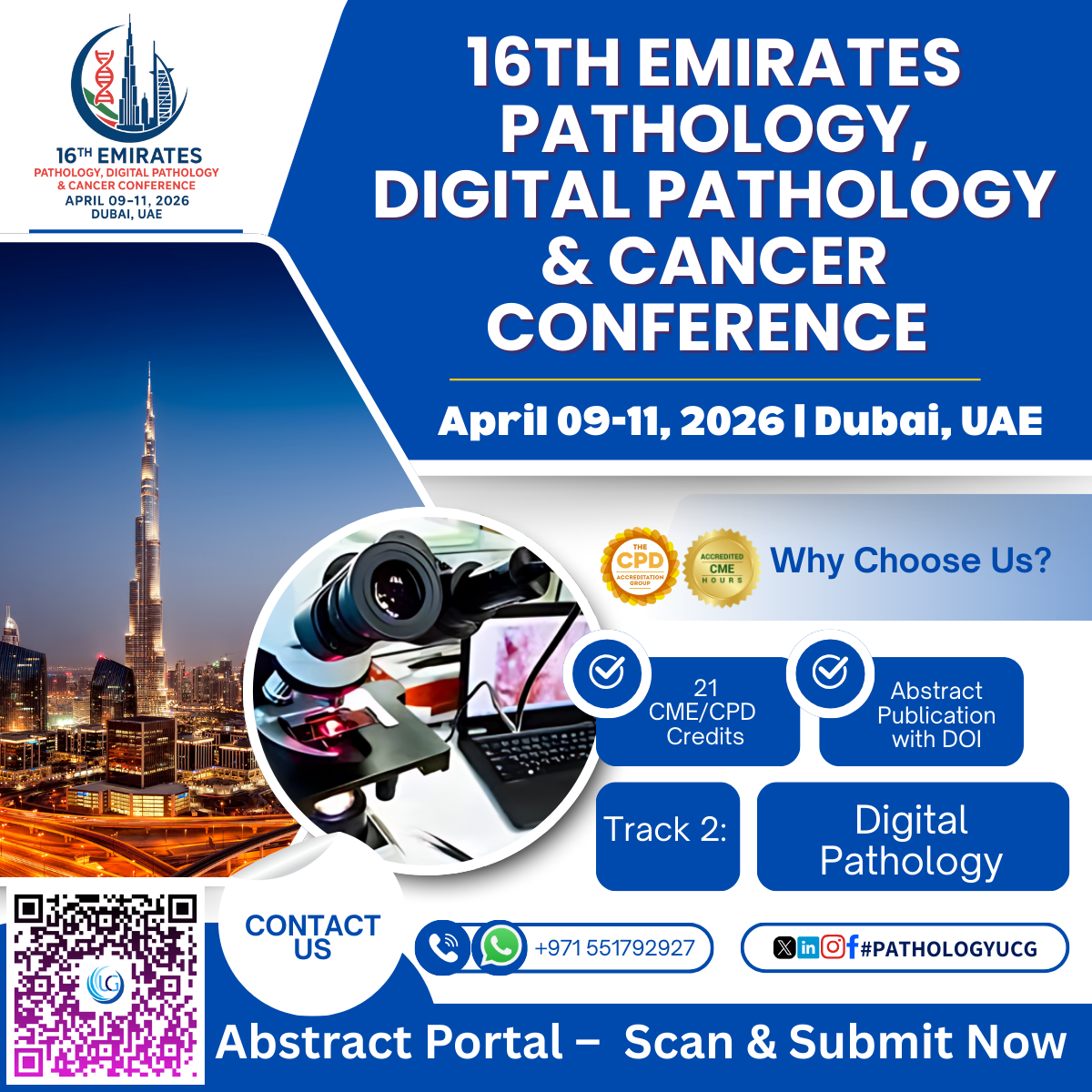



Call for Abstract/ Research Paper:
Sub Tracks: Pathology, pathology lab, pathology diagnosis, pathology...

Call for Abstract/ Research Paper:
Sub Tracks: Digital Pathology, Whole-Slide Imaging,...

Sub Topics: Microbial Pathology, Infectious Disease Pathology, Bacteriology, Virology, Mycology, Parasitology, Pathogen Detection, Disease Diagnosis, PathogenIdentification, Infection Control, Antimicrobial Resistance, MicrobialInfections, ViralInfections, Bacterial Infections, FungalInfections, ParasiticInfections, PathogenStudy, Clinical Microbiology, InfectiousDisease Diagnosis, Histopathology Of Infections
Microbial Pathology and Infectious Disease Pathology are closely related fields within pathology that focus on understanding and diagnosing diseases caused by microorganisms such as bacteria, viruses, fungi, and parasites.
Microbial Pathology
Definition: Microbial pathology is the study of pathogens (microorganisms that cause disease) and the diseases they produce. It encompasses the understanding of how microbes interact with host tissues, evade the immune system, and cause illness.
Key Areas:
Bacteriology: The study of bacterial pathogens and their role in diseases, including tuberculosis, pneumonia, and bacterial infections.
Virology: The study of viral pathogens, including the mechanisms of viral infections, such as influenza, HIV, and hepatitis viruses.
Mycology: The study of fungal pathogens and diseases they cause, such as candidiasis, aspergillosis, and cryptococcosis.
Parasitology: The study of parasitic organisms and their diseases, including malaria, giardiasis, and helminth infections.
Diagnostic Techniques:
Culture and Sensitivity Testing: Growing pathogens in the lab to identify them and test their susceptibility to antibiotics.
Microscopy: Using light or electron microscopy to observe pathogens in tissue samples or fluids.
Molecular Techniques: Employing PCR, sequencing, and other methods to detect and identify microbial DNA or RNA.
Infectious Disease Pathology
Definition: Infectious disease pathology focuses on the pathological aspects of diseases caused by infectious agents. It involves studying the host response to infections and the pathological changes that occur in tissues and organs due to these infections.
Key Areas:
Pathogenesis: Understanding how infections progress in the body, including the mechanisms of tissue damage and immune response.
Clinical Pathology: Diagnosing infections based on clinical symptoms, lab tests, and imaging studies.
Histopathology: Examining tissue samples to identify the pathological changes associated with infections, such as inflammation, necrosis, and tissue destruction.
Immunopathology: Studying how infections affect and interact with the immune system, including chronic inflammation and immune-mediated tissue damage.
Diagnostic Techniques:
Histological Examination: Analyzing tissue biopsies for signs of infection and tissue damage.
Serology: Testing blood samples for antibodies or antigens related to specific infections.
Molecular Diagnostics: Detecting pathogen-specific genetic material or markers in patient samples.
Clinical Relevance
Microbial Pathology helps in identifying and understanding the microorganisms responsible for infections, guiding appropriate treatment and infection control measures.
Infectious Disease Pathology provides insights into the effects of infections on the body, helping in diagnosing and managing infectious diseases and understanding their impact on patient health.
In Summary, microbial pathology focuses on the study of microorganisms and their role in disease, while infectious disease pathology deals with the pathological aspects of infections, including how they affect the body and how they are diagnosed.